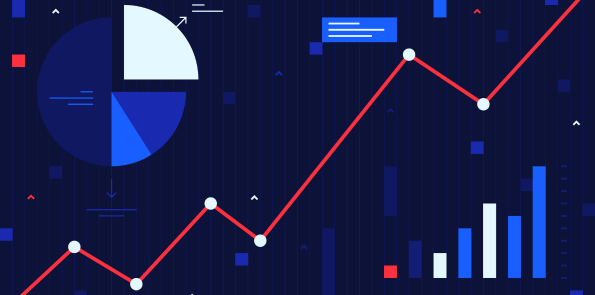Technical Analysis Demystified: A Comprehensive Guide for Traders

Market Research
Technical Analysis Demystified: A Comprehensive Guide for Traders
The Importance of Technical Analysis in Trading
Understanding Technical Analysis
Key Principles of Technical Analysis
Common Technical Analysis Tools and Indicators
Trend Lines
Support and Resistance Levels
Chart Patterns
Indicators
Implementing Technical Analysis in Trading Strategies
Identifying Entry and Exit Points
Managing Risk with Technical Analysis
Combining Technical Analysis with Fundamentals
The Limitations of Technical Analysis
Pitfalls to Avoid in Technical Analysis
Understanding the Role of Market Psychology
Conclusion
Technical Analysis Demystified: A Comprehensive Guide for Traders
The Importance of Technical Analysis in Trading
Technical analysis is a crucial tool for traders in the financial markets. It involves studying historical price and volume data to predict future price movements. Unlike fundamental analysis, which focuses on evaluating a company's financials and industry trends, technical analysis relies on charts and patterns to make trading decisions.
Understanding Technical Analysis
Technical analysis is based on the belief that historical price action repeats itself in the future. Traders use various tools and indicators to identify patterns, trends, and support and resistance levels. By understanding these patterns, traders can anticipate future price movements and make profitable trades.
Key Principles of Technical Analysis
There are several key principles that form the foundation of technical analysis:
- Price reflects all relevant information: Technical analysts believe that all factors affecting a security's price are already incorporated into its market price, making fundamental analysis unnecessary.
- History repeats itself: Patterns that have occurred in the past tend to repeat, allowing traders to make informed predictions about future price movements.
- Trend is your friend: Identifying and trading in the direction of the prevailing trend increases the probability of success.
- Support and resistance levels: These levels indicate areas where buying or selling pressure is likely to emerge, providing valuable guidance for entry and exit points.
Common Technical Analysis Tools and Indicators
Trend Lines
Trend lines are drawn on price charts to represent the direction and strength of a trend. An uptrend is formed by connecting a series of higher swing lows, while a downtrend is formed by connecting a series of lower swing highs. Trend lines provide traders with a visual representation of the market's direction, helping them identify potential entry and exit points.
Support and Resistance Levels
Support and resistance levels are areas where buying or selling pressure has historically been significant. Support acts as a floor, preventing prices from falling further, while resistance acts as a ceiling, preventing prices from rising further. These levels help traders determine when to enter or exit trades and can also be used as indicators of trend reversals.
Chart Patterns
Chart patterns are recurring formations in price charts that signal potential market reversals or continuations. Some common chart patterns include triangles, double tops and bottoms, head and shoulders, and flags. Traders use these patterns to identify potential entry and exit points and make informed trading decisions.
Indicators
Technical analysis involves the use of various indicators to help traders evaluate market conditions and identify potential trading opportunities. Popular indicators include moving averages, relative strength index (RSI), stochastic oscillator, and Bollinger Bands. These indicators provide valuable insights into market trends, momentum, and overbought or oversold conditions.
Implementing Technical Analysis in Trading Strategies
Identifying Entry and Exit Points
Technical analysis helps traders identify optimal entry and exit points by analyzing price patterns, trends, and indicators. Traders look for confirmation from multiple technical factors before executing a trade. For example, if a stock is in an uptrend, a trader may wait for a pullback to a support level and look for an oversold signal from an indicator before buying.
Managing Risk with Technical Analysis
Risk management is a crucial aspect of trading. Technical analysis can help traders set stop-loss orders and determine appropriate position sizes based on support and resistance levels. By identifying key levels where the market is likely to reverse, traders can limit potential losses and protect their capital.
Combining Technical Analysis with Fundamentals
Although technical analysis focuses mainly on price movements, combining it with fundamental analysis can provide a more comprehensive view of the market. Traders can look for opportunities where the technical and fundamental analysis align. For example, if technical analysis indicates a bullish trend, traders can check for positive news or strong earnings reports to further support their trading decision.
The Limitations of Technical Analysis
Pitfalls to Avoid in Technical Analysis
While technical analysis is a valuable tool, it is not without limitations. Traders should be aware of common pitfalls, such as over-reliance on indicators, chasing price action, and confirmation bias. It is essential to use technical analysis as part of a broader trading strategy and to consider other factors like fundamentals and market sentiment.
Understanding the Role of Market Psychology
Technical analysis relies on the assumption that market participants' emotions and behaviors are reflected in price charts. Market psychology plays a significant role in shaping price movements. Fear, greed, and other emotions drive market participants' decision-making, creating patterns and trends that technical analysts seek to exploit. Understanding market psychology can help traders interpret chart patterns and make more accurate predictions.
Conclusion
Technical analysis is a powerful tool that enables traders to analyze historical price and volume data to predict future price movements. By understanding key principles, using common tools and indicators, and implementing technical analysis in trading strategies, traders can make informed decisions and increase their chances of success. However, it is important to be aware of the limitations of technical analysis and consider other factors such as fundamentals and market sentiment in conjunction with technical analysis. With practice and experience, traders can demystify technical analysis and use it to their advantage in the financial markets.


